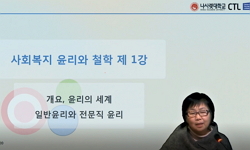본 연구는 노인학대 유형의 특징과 개념을 이해하고, 중복학대에 대한 요인을 이해하고자 질적인 접근(qualitative approach)을 하였다. 2009. 1월부터 2010년 2월까지 충남지역 노인학대 신고 접수(...
http://chineseinput.net/에서 pinyin(병음)방식으로 중국어를 변환할 수 있습니다.
변환된 중국어를 복사하여 사용하시면 됩니다.
- 中文 을 입력하시려면 zhongwen을 입력하시고 space를누르시면됩니다.
- 北京 을 입력하시려면 beijing을 입력하시고 space를 누르시면 됩니다.
노인 학대유형의 분석에 관한 연구 : 중복학대를 중심으로 = A Study on the analysis of elder abuse's types : focused on multiple types
한글로보기https://www.riss.kr/link?id=T12164767
- 저자
-
발행사항
천안 : 호서대학교 문화복지상담대학원, 2010
-
학위논문사항
학위논문(석사) -- 호서대학교 문화복지상담대학원 , 사회복지학과 , 2010. 8
-
발행연도
2010
-
작성언어
한국어
- 주제어
-
발행국(도시)
충청남도
-
형태사항
v, 97p. ; 26cm
- 소장기관
-
0
상세조회 -
0
다운로드
부가정보
국문 초록 (Abstract)
본 연구는 노인학대 유형의 특징과 개념을 이해하고, 중복학대에 대한 요인을 이해하고자 질적인 접근(qualitative approach)을 하였다. 2009. 1월부터 2010년 2월까지 충남지역 노인학대 신고 접수(대면 13건, 전화102건, 온라인 1건)된 116사례를 수집하였다. 노인학대로 접수된 사례들을 먼저 학대군으로 분류하였다. 노인학대를 신체적 학대, 정서적 학대, 경제적 학대, 방임으로 나누고, 케이스를 선택하여 상담자료를 요청하였다. 상담된 내용을 다시 정리하여 중복된 유형이 나타난 사례들로 중복학대실태를 파악하였다. 그리고, 이론적 배경에서 제시한 생태학적 관점과 가정폭력 노인학대 이론에 근거하여 사례의 경향들을 부연설명하였다. 이론적 배경에서 제시한 생태학적 관점과 부양을 근거로 한 노인학대 모델에 근거하여 학대피해노인에게 학대의 결과로 발생하는 신체적 학대, 정서적 학대, 경제적 학대, 방임 등의 피해영역을 신체적 학대와 정서적 학대가 함께 발생한 사례, 신체적 학대와 방임이 함께 발생한 사례, 정서적 학대와 방임이 함께 발생한 사례, 정서적 학대와 경제적 학대가 함께 발생한 사례, 3가지 이상의 학대가 동시에 발생한 사례로 정리하였다. 자기방임과 성적 학대, 유기는 제외하였다.
연구의 내용은 첫째, 중복학대의 유형은 기존 분류에 충실하게 나타나는가였다. 상담의 결과들은 기존 분류의 판정기준에 의해 ?X점이 맞추어져 있기에 다른 유형을 찾는 것은 중복학대의 유형을 두가지 이론에 비추어 재정리해보는 시도였다. 물론 기존 분류의 유형별 판정기준에 없는 학대의 유형들이 있었으나 상담자별 단어를 고르기가 각각이기에 새로운 유형을 만드는 노력은 시도하지 못했다.
둘째, 중복학대의 유형은 두가지 이론으로 설명되는가였다. 생태학적접근방법과 부양을 근거로 한 가족폭력의 이론은 서로 일치하는 부분이 많았다. 두 이론의 전개가 한 개 이상의 학대가 발생하는 중복학대에 대한 이론으로 적합하였으며, 사례별 상황분석결과도 그러하였다. 생태학적 접근방법은 노인피해자의 위험요인과 가해자의 위험요인이 학대를 유발한다는 것이고, 부양을 근거로 한 가정폭력 노인학대모델은 피해자와 가해자가 함께 하는 관계상황이 강조되었다.
셋째, 중복학대의 발생에 따른 학대유형의 재정의 또는 사회복지적 대응방안은 노화에 따른 신체 및 심리적 기능의 약화와 그에 수반되는 가정 및 사회적 고립에 대한 적극적인 개입방안을 논의하였다. 가정폭력의 다른 유형들에서 관찰되어지는 것과 마찬가지로 노인에 대한 학대는 학대의 행위 그 자체도 문제이지만 학대행위가 한두 번에 그치는 것이 아니고 대체로 같이 사는 가족구성원에 의해서 지속적으로 이루어지는 것이라는데 문제의 심각성이 있다고 할 수 있다. 실제로 노인을 대상으로 한 학대의 행위들은 우리 사회에서 발생비율 및 심각성이 점점 더해가고 있고, 따라서 사회 전체가 관심과 책임감을 가지고 실질적인 대책마련을 서둘러야 할 시점이라고 판단된다. 노인학대의 발생과 밀접한 관련을 갖고 있는 요인들을 살펴보면 크게 피학대 노인들의 경제적 의존도와 학대자의 특성을 들 수 있다. 특히 노인의 신체적, 정신적 및 경제적 상황은 학대 발생의 가능성을 추측해 볼 수 있는 주요 변수들로 밝혀졌다. 그리고 노인 학대는 경제적․신체적 의존상태에서 발생하는 경우가 많아 사회적으로 쉽게 노출되기도 어렵지만 특히 우리 사회의 전통적인 가족윤리와 정부의 효를 중심으로 한 노인 정책은 더욱 더 노인 학대를 은폐시키고 있다.
다국어 초록 (Multilingual Abstract)
The purpose of this research is to understand the characteristics and concepts of elder abuse types and understand the duplicate factors for abuse. For this purpose, the qualitative approach was used. From January 2009 to February 2010, the 116 cases...
The purpose of this research is to understand the characteristics and concepts of elder abuse types and understand the duplicate factors for abuse. For this purpose, the qualitative approach was used. From January 2009 to February 2010, the 116 cases (13 interview cases, 102 phone cases, and 1 online case) were collected in the Chungnam Province through elder abuse hotline. The registered elder abuse cases were first divided into abuse groups. The elder abuse cases were divided into physical abuse, emotional abuse, and economic abuse. Then from the categories, cases were selected and the counseling resources were requested. After understanding the content and reorganizing them, the duplicate type cases presented were identified to understand the duplicate abuse status. And from the proposed ecological perspective from the theoretical background and based on the domestic violence elder abuse theory, described more of the trend of the cases. Based on the proposed theoretical background and support from the ecological perspective, the model of elder abuse was created. Based on that model, the neglect and damage zone such as physical abuse, emotional abuse, and economic abuse, which were caused as a result of elderly abuse was organized into physical abuse and emotional abuse cases that occurred together, physical abuse and neglect cases that occurred together, emotional abuse and neglect cases that occurred together, emotional abuse and economic cases that occurred together, and 3 or more cases of abuse occurred together. Self-neglect, sexual abuse, and abandonment were excluded.
The first research content was "does the duplicate type of abuse appear faithfully in the existing category?" The interview conducted prior was focused on the existing classification criteria so looking for a different type of redundancy in the light of theory was to attempt to redefine it through two kinds of types of abuse. Of course there were abuse types that existed in the classification criteria but because each interviewer chose different words, they didn't put in the effort in creating a new type.
Second, "does the duplication of the type of abuse is explained in two names of theories" Ecological approach and the theory of family violence on the basis of dependency had many partial matches. The development of two theories fir for the abuse that occurred over a redundant theory and the per instance situation analysis showed the same results. Ecological approach was an approach that risk factors of the elderly victims and risk factors the perpetrators cause abuse on the elderly and the elder abuse model based on domestic violence of supporting the elders, stressed the conditions of the relationship with the victim and the perpetrator.
Third, the type of redundant occurrence of abuse due to financial abuse or corresponding social welfare measures discussed the aggressive intervention on the physical and psychological features of aging and the accompanying weakening of family and social isolation. Just like it has been observed in other types of domestic violence, the acts of abuse of elderly abuse in itself is a problem but it can be said that the severity of this issue that is abuse act does not end with one or two times and the abuse is usually by family members living with the elders. In fact, the abuse of elderly people is becoming more and more in incidence and severity in our society. Thus, the society as a whole needs to have substantial interest and commitment measure to deal with this issue in a rapid matter.
목차 (Table of Contents)
- Ⅰ. 서 론 1
- 1. 문제제기 1
- 2. 연구의 목적 3
- 3. 연구의 의의 및 제한점 4
- 가. 연구의 의의 5
- Ⅰ. 서 론 1
- 1. 문제제기 1
- 2. 연구의 목적 3
- 3. 연구의 의의 및 제한점 4
- 가. 연구의 의의 5
- 나. 연구의 제한점 6
- Ⅱ. 이론적 배경 7
- 1. 개념 및 유형 7
- 가. 노인의 개념 7
- 나. 노인학대의 개념 7
- 다. 노인학대의 유형 12
- 2. 선행연구 18
- 3. 이론적 분석틀 21
- 가. 생태학적 접근모델 21
- 나. 부양을 근거로 한 노인학대 모델 22
- 다. 이론적 분석틀과 중복학대 25
- 3. 노인학대의 특성 26
- 가. 노인학대의 특성 26
- 나. 노인학대와 관련된 대상자의 특성 28
- 4. 노인학대의 현황 32
- 가. 개요 32
- 나. 노인학대 상담건수 33
- 다. 학대사례판정 34
- 라. 신고자 유형 34
- 마. 신고의무자 신고건수 35
- 바. 학대행위자 현황 36
- 사. 노인학대 유형별 분류 37
- Ⅲ. 연구방법 38
- 1. 조사대상 38
- 2. 연구방법 38
- 3. 연구내용 39
- 3. 연구문제 39
- Ⅳ. 연구결과 41
- 1. 조사대상자의 일반적 특성 41
- 2. 학대유형 분석 45
- 3. 중복학대유형 분석 48
- 가. 신체정서적 학대(BP) 49
- 나. 신체적방임(BN) 53
- 다. 정서적방임(PN) 56
- 라. 정서적경제적(PF) 59
- 마. 3가지 이상 중복학대(BPFN) 62
- 4. 중복학대요인 분석 66
- 가. 생태학적 노인학대 모델 66
- 나. 부양을 근거로 한 노인학대 모델 67
- 다. 기타 학대 요소 68
- Ⅴ. 결론 및 제언 70
- 1. 노인학대 용어의 재정립 70
- 2. 노인 학대 예방 정책의 문제점 71
- 3. 노인 학대 방지를 위한 사회복지적 개입방안 73
- 참고문헌 77
- ABSTRACT 82
- 부록 86












